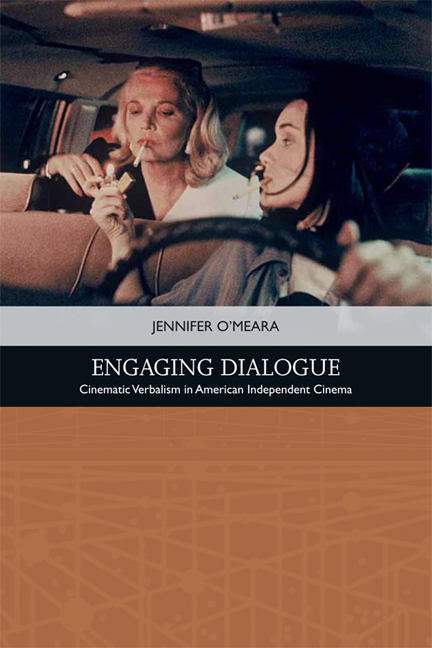Book contents
- Frontmatter
- Contents
- List of Figures
- Acknowledgements
- Introduction
- 1 Measuring Engaging Dialogue
- 2 Verbal-Visual Style and Words Visualised
- 3 The Integrated Soundtrack and Lyrical Speech
- 4 Dialogue and Character Construction
- 5 Embodying Dialogue: Rich Voices, Expressive Mouths and Gesticulation
- 6 Gendered Verbal Dynamics: Sensitive Men and Explicit Women
- 7 Adapting Dialogue and Authorial Double-voicing
- Conclusion: Verbal Extremes and Excess
- Filmography
- Bibliography
- Index
6 - Gendered Verbal Dynamics: Sensitive Men and Explicit Women
Published online by Cambridge University Press: 01 May 2021
- Frontmatter
- Contents
- List of Figures
- Acknowledgements
- Introduction
- 1 Measuring Engaging Dialogue
- 2 Verbal-Visual Style and Words Visualised
- 3 The Integrated Soundtrack and Lyrical Speech
- 4 Dialogue and Character Construction
- 5 Embodying Dialogue: Rich Voices, Expressive Mouths and Gesticulation
- 6 Gendered Verbal Dynamics: Sensitive Men and Explicit Women
- 7 Adapting Dialogue and Authorial Double-voicing
- Conclusion: Verbal Extremes and Excess
- Filmography
- Bibliography
- Index
Summary
Dialogue in contemporary independent cinema often complicates certain generic expectations of what forms of speech are ‘male’ and ‘female’, resisting the tendency to script male and female dialogue in decidedly different ways. Although, in terms of gender balance, the filmmakers under discussion tend to be associated with telling men's stories (and so foregrounding male voices) the reality is not quite that extreme. Hartley has produced several female-centred narratives (including Trust, An Unbelievable Truth and Fay Grim), with Stillman's last three films (The Last Days of Disco, Damsels in Distress and Love & Friendship) and Baumbach's last three films (Margot at the Wedding, Frances Ha and Mistress America) all focused on female characters. While Linklater may have chosen to chronicle Boyhood rather than girlhood, his Before Sunrise trilogy offers extensive and equal time to each half of its central couple. And, even if relegating women to minor roles is an offence (one that Anderson and Jarmusch are most guilty of), then it is one that can be lessened when minor female characters are given disproportionate verbal authority.
Discussion of gender and dialogue in film studies tends to focus on genre in Hollywood cinema and, in relation to the voice-over, to take a psychoanalytic approach – as in Kaja Silverman's The Acoustic Mirror (1988). In terms of male characters, the view that cinema predominantly represents men of action, not words, is captured by Richard Dyer's (1982) and Steve Neale's (1983) discussion of the masculine ideal as one of ‘masculinity-as-activity’ (Dyer 1982: 66–7). Neale (1983: 12) identifies the centrality of battles between individual or groups of men to the ‘male’ genres of the war film, the gangster film and the Western. Writing explicitly on dialogue in the action film, the other quintessentially male genre, Yvonne Tasker (1993: 87) sums up how ‘speech and silence’ are central to establishing its representation of masculinity. Tasker discusses Sylvester Stallone and Clint Eastwood as two sides of the same near-silent coin, with Eastwood considered to artfully withhold words, while Stallone's muttering instead suggests ‘an artless inability to speak’ (86–7). In contrast to these physically brave and taciturn men, the tortured male protagonist of film noir often reveals existential concerns through a voice-over that confides in the audioviewer.
- Type
- Chapter
- Information
- Engaging DialogueCinematic Verbalism in American Independent Cinema, pp. 128 - 158Publisher: Edinburgh University PressPrint publication year: 2018



